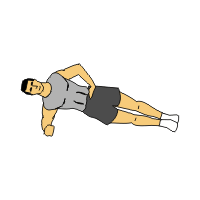In all stages of construction, there is a need to do overhead work. People with shoulder problems know that when you have pain, the first thing you hear from your Health Care Professional is to limit overhead activity. But, no matter what the job is, there is always a need to work overhead.
The most common shoulder problem I see among overhead workers, such as those in the construction industry, is Subacromial Impingement. This basically means that a Rotator Cuff muscle is getting pinched under a piece of bone. The pain associated with this is usually felt near the side of your shoulder and can sometimes travel down your arm.
In order to prevent this type of Impingement Syndrome, you can look like building a house. The house is only as strong as its foundation. Similarly, in order to have a healthy shoulder, you need a stable and well positioned shoulder blade. Your entire arm only attaches to your body by that little joint between your collar bone and breast bone. This joint is not very strong, so you need the proper coordination of 18 different muscles. If these muscles are not in proper balance, the shoulder blade can rest in the wrong position. I usually explain why this is a problem to patients by comparing it to closing a door. If you push a door closed by pushing the knob, it’s easy. If you push near the hinges, you still get it closed but you need to work much harder. The same happens in your shoulder if it is sitting in the wrong position. Over a period of time, pain is the result.
If you already experience shoulder pain, it is important to have the issue looked at by a licensed Chiropractor. Even occasional pain can be a sign of a worsening problem that needs to be addressed.
Here are a couple quick stretches/exercises that will help prevent this type of imbalance in an overhead worker.
Trap Stretch
Sit up straight and sit on one arm, or grab the bottom of your chair. Gently move your neck to the opposite side and down, as if you are looking at the knee opposite to the hand you are sitting on. Hold this position for 20-30 seconds then relax. Repeat for the opposite side
Chest Stretch
Stand next to a wall and place for your forearm against the wall, with your elbow above your shoulder. Step forward slightly until you feel a comfortable stretch. Hold this position for 20-30 seconds then relax. Repeat for the opposite side.
Wall Angel
Stand with your back against the wall with both elbows bent to 90 degrees and raised to be level with your shoulders. While concentrating on keeping your shoulder blades held down and back, slowly raise your arms about 6-10 inches then slowly lower to the starting point. While doing this, try to keep your hands and wrists as close to the wall as you can. Repeat 10-12 times, then relax. Dr. Jeff Marshall, BScKin, DC, CSCS
Back Home Chiropractic
747-0844





